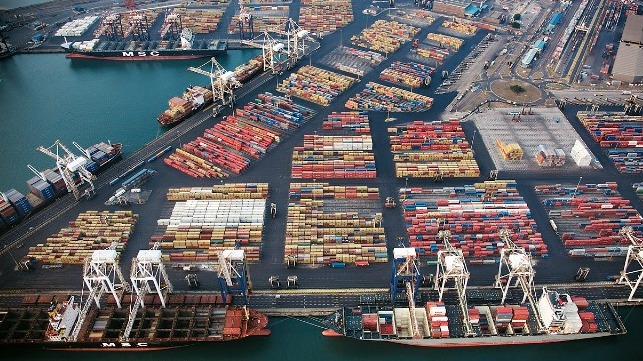Port of Durban Takes Measures to Reduce Congestion

One of the greatest challenges facing Africa’s seaport cities is port-induced traffic congestion. This has been an especially serious issue in eThekwini municipality, home to Sub-Saharan Africa’s largest container port, the Port of Durban. Due to Durban’s transshipment business and its capacity to handle large container vessels, trucks drawn from the whole of the Southern African region pick up and drop off containers at its terminals, creating massive gridlock along the central Bayhead port area’s main access road.
It is against this background that a multi-disciplinary task team led by the Port of Durban General Manager was commissioned last year to alleviate truck congestion around the port. The team has been working on nine targeted work streams aimed at easing port traffic along the Bayhead access route.
In a statement released recently, the team said that it will engage property developers around Durban to look into land parcels outside of the port that will act as staging areas for trucks destined for the Maydon Wharf area. About 70-80 percent of boxes handled at the Port of Durban are stuffed and de-stuffed within port’s immediate vicinity, creating huge flows of container trucks during peak periods.
The team has also formalized a mandatory truck appointment system project, which has been completed and handed over to TPT’s (Transnet Port Terminals) Pier 1 and 2 Container terminal operations. Two bulk terminal depots have also successfully piloted the system and are now utilizing it.
The taskforce is also pushing for a second access road to the port, as well as widening the current Bayhead and Langerberg roads.
Durban is one of the few Sub-Saharan cities that has a fully-formed example of a port-city interface plan. In 2010, the eThekwini Municipality and Transnet jointly drafted a long-term development plan for the Durban-to-Gauteng Province Freight Corridor “Vision 2050”. It seeks to align the interests of the city and port, including development of the Durban Dig-out Port (DDOP), which was to significantly expand the port’s capacity to handle cargo. However, with a slowing South African economy, most of these ambitious projects in the ocean economy are on the back burner.
The opinions expressed herein are the author's and not necessarily those of The Maritime Executive.

